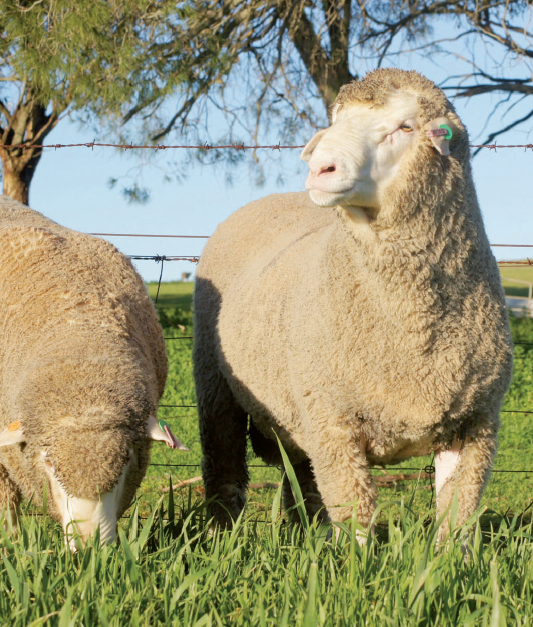TIME FOR DOHNES TO SHINE
THE Australian sheep industry may never have been in a more unique position.
Prices for sheep meat, wool and breeding ewes are at near all time highs, while flock numbers are at their lowest levels since the early 1900s.
So what does this mean for producers currently running Dohnes or producers looking to get into the breed in the coming years?
The answer is simple. They could not be any better placed as Dohnes have been specifically bred over the years to take advantage of this position.
The breed’s true dual purpose nature means it can take advantage of both the strong sheep and wool markets.
The first Dohnes bred in South Africa in the late 1930s were bred out of a need to produce a dual purpose sheep that helped producers cope with the rigours of a harsh environment and changing market demands, something that Australian producers have experienced in the last few years.
Selective breeding over seven decades has resulted in an animal which is highly fertile, has ease of lambing, good mothering ability to produce lambs with high growth rates and excellent muscling, which are suited to the domestic and the export lamb markets and a wool quality which would match any pure Merino.
The quality of their meat is unsurpassed and carcases have proven to be top quality when judged against many other breeds in competitions across Australia. Dohnes have been hard to beat both on the hoof and on the hook.
On the wool side of things purebred ewes can produce four to six kilograms of high quality, white 18 to 22 micron wool similar to the tradition of the great Australian wool clip.
Dohne ewes also command a premium in the saleyards as purebred and crossbred Dohne ewes can be run as a selfreplacing, meat-wool enterprise, eliminating the need to buy in replacement or traditional first cross ewes as with other prime lamb breeds.
And with flock numbers at low levels the need to produce lambs in coming years will also be highly important.
With their high fertility Dohnes could be the best option for many producers to turn to.
It is not uncommon for the breed to record lambing percentages of up to up to 150pc.
Producers who have already recognised these benefits of the breed and made the change were able to capitalise on the rising markets in 2010, when week after week new records were being set
in the saleyards for ewes and lambs throughout Australia.
The Dohne breed was in the thick of this, recording a national record of $206 for extra heavyweight lambs at one point during January this year.
The record was achieved in the Forbes saleyards, New South Wales, for a pen of 29 lambs with an estimated carcase weight of 35kg.
The pen was bought by Country Fresh, Tamworth, NSW and offered by Max and Brenton Browne, Tullibigeal, NSW.
The lambs were out of Dohne ewes by Poll Dorset rams.
While in Western Australia, at the height of the excitement, Ian and Steph Longmuir, Koorda, topped the market at the Muchea Livestock Centre with a line of F3 10 month old lambs at $166.50 bought by WAMMCO International.
Both were great achievements and sure signs that the breed is widely accepted by the trade.
Prices for ewes also hit record levels in 2010 as Eastern States producers began to replace breeding stock after years of drought and Dohne ewes were in demand with prices regularly going beyond the $200 barrier.












 Facebook
Facebook YouTube
YouTube Instagram
Instagram